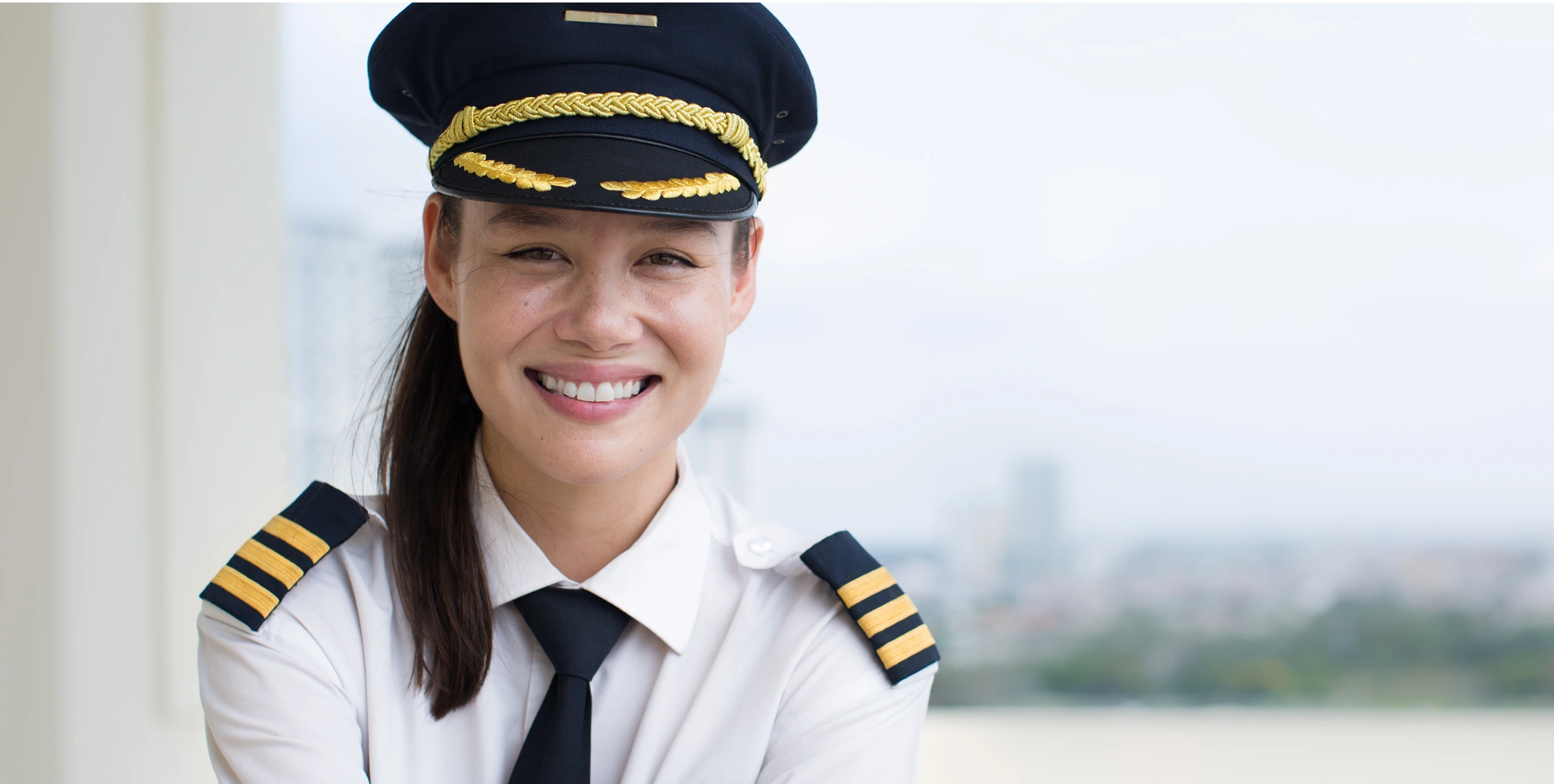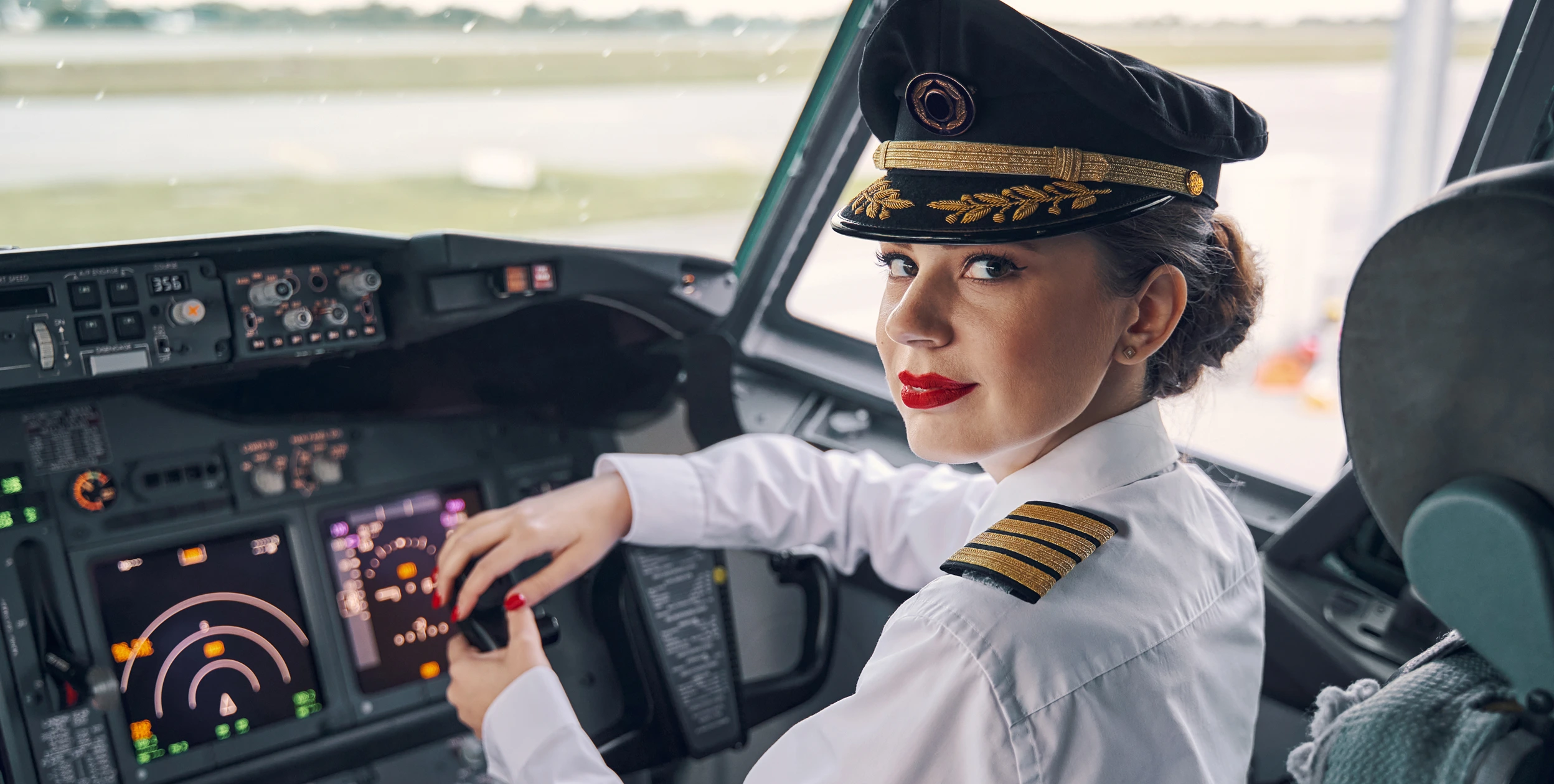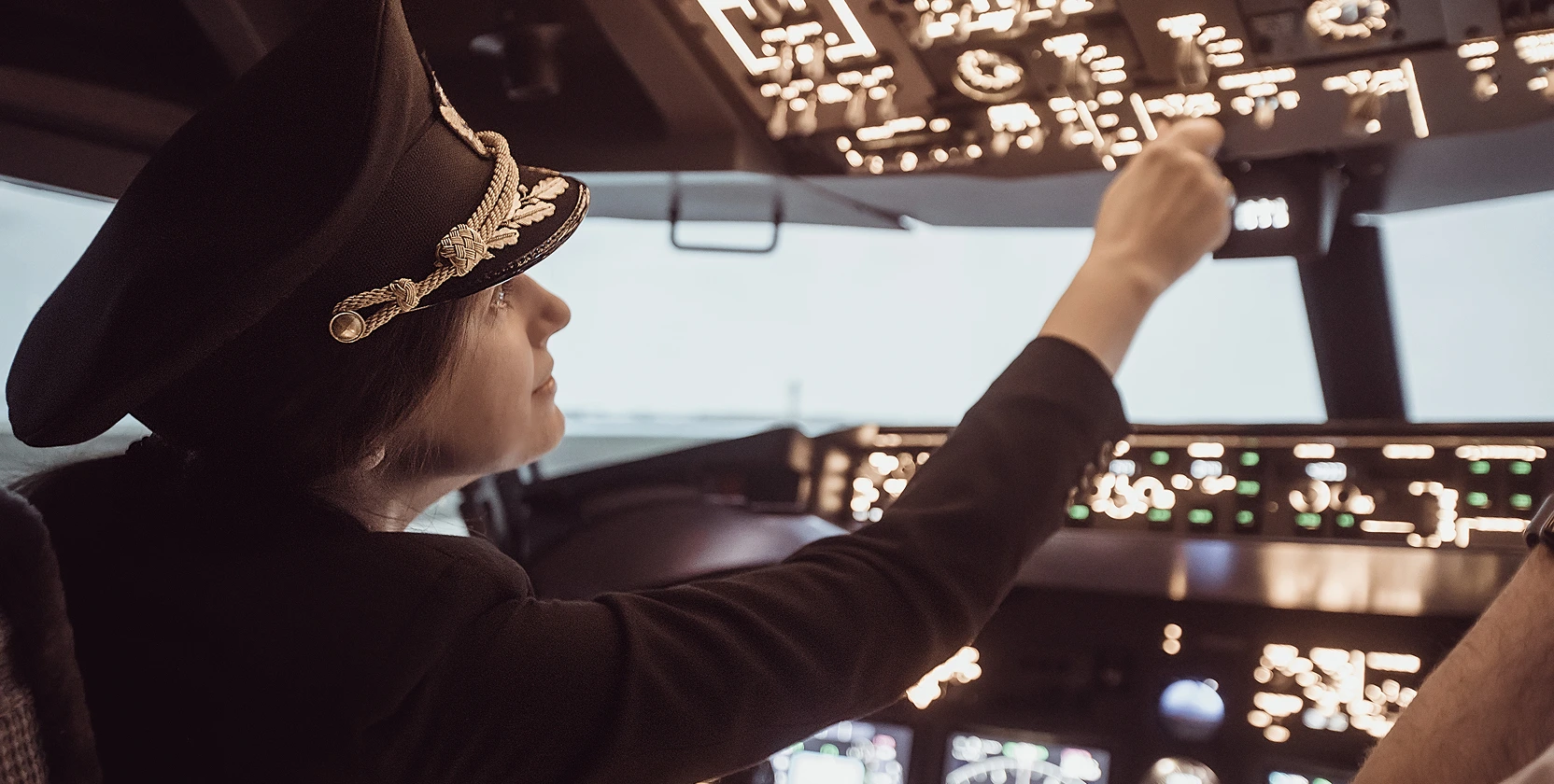Did you know that more and more women are working as pilots in Colombia and around the world? While they still represent a smaller percentage compared to men, their presence in aviation is growing rapidly. In this article, we explore how many women pilots there are, what it takes to become one, and the real-life stories that are helping transform the industry.
When we think of an airplane pilot, the image that often comes to mind is a man at the controls. However, more and more women are breaking barriers and taking the lead in both commercial and private aviation. But how many women are actually pilots today?
While growth has been steady, the numbers show that female representation in aviation is still low. According to recent data from the International Society of Women Airline Pilots, only 5.8% of commercial pilots worldwide are women. In other words, out of every 100 pilots you see at an airport, only about six are women.
Despite this figure, it’s important to highlight that just a few decades ago, the percentage was even lower. Thanks to inclusion programs and a global shift in mindset, more women are training to become pilots every year. Aviation schools around the world—including in Colombia—are seeing a rise in female enrollment from those who dream of taking to the skies.
When it comes to countries leading this transformation, India ranks first with nearly 13% of its pilots being women, the highest percentage in the world. It’s followed by nations like Australia, Canada, and the United States, where women represent between 6% and 7% of the total pilot population.
In Latin America, significant progress is also being made. Brazil and Mexico are among the countries showing the fastest growth in female pilot training. In Colombia, although the percentage is still low, more women are enrolling each year in specialized academies like Global Training Aviation to pursue their dream of becoming professional pilots. Without a doubt, the future of aviation will be increasingly diverse, and women are playing a leading role in this change.

More and more women in Colombia and around the world are asking: What does it take to become a pilot?
In general terms, the requirements are the same for both men and women. If you dream of becoming a pilot, here’s everything you need to know to start your journey.
To become a pilot, it’s essential to meet a series of academic and physical requirements.
In Colombia, for example, you must have completed at least 11th grade (high school) and have a good level of English, as it is the universal language of aviation.
From a physical standpoint, you need to pass an aeronautical medical exam that assesses your overall health, vision, hearing, and cardiovascular condition. Many women wonder if there are special restrictions for them, and the answer is no: the exams are the same for both genders. What truly matters is proving that you are in optimal condition to operate an aircraft safely.
One of the most common questions is whether women go through a different training process than men. The answer is clear: there are no differences in pilot training based on gender. The standards are the same for all students, regardless of whether they are male or female.
What is changing is the growing number of initiatives aimed at supporting and encouraging women during their training. These programs help create inclusive environments and promote female participation in a historically male-dominated industry.
So, if you’re a woman and want to become a pilot, rest assured you have the same opportunities and challenges as any other aspiring aviator. What truly matters is your commitment, your passion for flying, and your determination to conquer the skies.

For more than 100 years, women pilots have shattered barriers and paved the way for future generations. If you’re thinking about becoming a pilot, these stories will remind you that achieving that dream is absolutely possible.
When we talk about women pilots who made history, Amelia Earhart is undoubtedly one of the first names that comes to mind. Born in the United States, Amelia became the first woman to fly solo across the Atlantic Ocean in 1932, a milestone that catapulted her to global fame.
Her courage and determination not only made her a legend in aviation but also a powerful symbol of female empowerment. Although her mysterious disappearance during a flight in 1937 remains an unsolved mystery, her legacy continues to inspire thousands of women pilots around the world, including many in Colombia who are now training to take to the skies.
Another key figure is Raymonde de Laroche, a Frenchwoman who, in 1910, became the first woman in the world to receive an official pilot’s license. At a time when aviation was in its infancy and entirely dominated by men, Raymonde proved that women could also master these new and challenging flying machines.
Her achievement opened the door for other women to follow in her footsteps, marking the beginning of a transformation that continues more than a century later.
Today, inspiring stories are not just part of the past. In Spain and Latin America, more and more women are making history in modern aviation. Airlines like Iberia and Avianca now proudly feature women commanding international flights, something that was rare just a few years ago.
In Colombia, pioneers like Paula Andrea Zamora, one of the first women to pilot large commercial aircraft, are proof that opportunities for women in aviation are growing. Flight schools such as GTA in Bogotá and other cities are training the next generation of female pilots who will lead the future of aviation in the region.
These stories show that, although the journey hasn’t always been easy, more and more women are leaving their mark on aviation and the future looks increasingly inclusive and diverse.

The outlook for women in aviation has never been more promising. More and more women are choosing to train as pilots, both in commercial and military aviation. The future is clear: female presence in the skies will continue to grow and strengthen in the coming years.
In recent decades, the number of women pilots in commercial aviation has steadily increased. Leading airlines around the world—including those operating in Colombia and Latin America—are hiring more women for their flight crews. It’s estimated that in the next 10 years, the percentage of women in the cockpit could double, thanks to new inclusion policies and the high demand for pilots across the industry.
But it’s not just commercial aviation where barriers are being broken. Air forces in countries like Colombia, Mexico, and Brazil have begun integrating more women into their ranks. For example, the Colombian Air Force (FAC) now includes several women pilots flying everything from training aircraft to combat planes—proving that when it comes to talent and determination, there are no limits.
To support this growing trend, various organizations and flight academies are developing special programs to encourage more women to pursue careers in aviation. In Colombia, educational institutions and training centers are offering scholarships, mentorships, and awareness campaigns aimed at inspiring women to see becoming a pilot as a real and achievable goal.
On an international level, programs like Women in Aviation International and The 99s provide support networks, educational resources, and scholarship opportunities for women looking to enter this exciting field.
These efforts are beginning to pay off: today, we see more women not only working as pilots, but also as flight instructors, airline leaders, and influential figures in the aviation industry.

Currently, around 5.8% of commercial pilots worldwide are women. While still a minority, this number is steadily increasing thanks to inclusion programs and a growing interest among women in aviation. In countries like India, the percentage is even higher, reaching nearly 13%. In Colombia, more and more women are enrolling in aviation schools to become professional pilots.
A woman who flies an aircraft is simply called a pilot. There is no gender-specific term. In everyday language, some people may use expressions like “female pilot” or “woman pilot” to specify gender, but in the professional aviation world, both men and women hold the same title: pilot.
To become a pilot, whether you’re a woman or a man, you must meet certain requirements: have at least a high school diploma, possess a good level of English, pass aeronautical medical exams, and complete a certified training program at an aviation academy. In Colombia, training centers like Global Training Aviation (GTA) provide all the tools and education needed for any woman interested in becoming a commercial or private pilot.